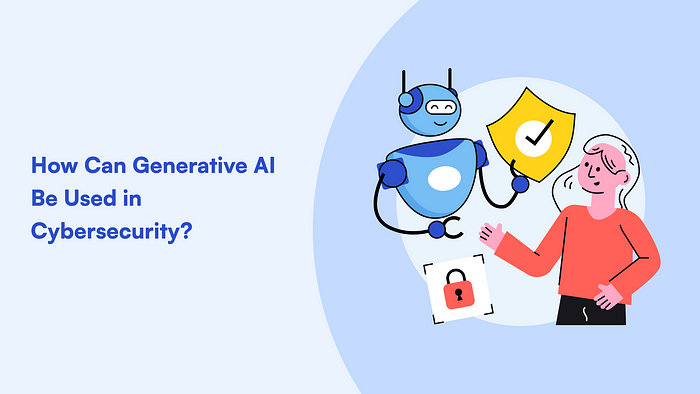How Can Generative AI Be Used in Cybersecurity?

Generative AI is revolutionizing cybersecurity by enhancing threat detection and response capabilities. In this blog post, we will explore the various ways in which generative AI can be utilized to bolster cybersecurity defenses and mitigate cyber threats effectively.
Understanding Generative AI
Before diving into its applications in cybersecurity, let’s grasp the essence of generative AI. Generative AI encompasses algorithms and models designed to generate new data that is similar to, but not exactly the same as, the input data it was trained on. This capability enables generative AI systems to create realistic simulations, synthetic data, or even entirely new content based on patterns learned from existing data.
Applications in Cybersecurity
1. Generating Synthetic Data for Training:
Generative AI can be utilized to generate synthetic datasets that mimic real-world cyber threats. These datasets can be invaluable for training machine learning models to recognize and respond to various types of attacks. By exposing these models to a wide range of simulated threats, organizations can enhance their resilience against cyber threats without risking real data.
2. Enhancing Intrusion Detection Systems (IDS):
Intrusion Detection Systems play a critical role in identifying suspicious activities within a network. Generative AI can augment IDS by generating diverse attack scenarios, enabling these systems to adapt and detect novel threats more effectively. Moreover, generative AI can simulate adversarial attacks, helping organizations fortify their defenses against sophisticated adversaries.
3. Behavioral Analysis and Anomaly Detection:
Generative AI can aid in behavioral analysis by creating models that learn normal patterns of system and user behavior. Any deviation from these learned patterns can then be flagged as anomalous, potentially indicating a security breach or unauthorized access. This proactive approach allows organizations to detect and respond to threats in real-time, mitigating potential damages.
4. Predictive Threat Intelligence:
By analyzing vast amounts of historical data, generative AI can forecast emerging cyber threats and vulnerabilities. These predictive analytics empower organizations to shore up their defenses preemptively, allocate resources more efficiently, and stay one step ahead of cyber adversaries. Such insights are invaluable for proactive risk management and strategic decision-making.
Challenges and Considerations
While the applications of generative AI in cybersecurity are promising, there are several challenges and considerations to be mindful of:
- Ethical Implications: Generating synthetic data raises ethical concerns regarding its potential misuse or unintended consequences. Ensuring responsible and ethical use of generative AI technologies is crucial to mitigate such risks.
- Adversarial Attacks: Adversaries may exploit generative AI systems to craft sophisticated attacks that evade detection mechanisms. Constant vigilance and robust cybersecurity strategies are essential to counter such threats effectively.
- Data Privacy: Generating synthetic data requires access to large volumes of real data, which raises concerns about data privacy and compliance with regulations such as GDPR and CCPA. Organizations must implement stringent data protection measures to safeguard sensitive information.
Conclusion
Generative AI boosts cybersecurity by creating synthetic data for training, enhancing intrusion detection, facilitating behavioral analysis, and providing predictive threat intelligence.
